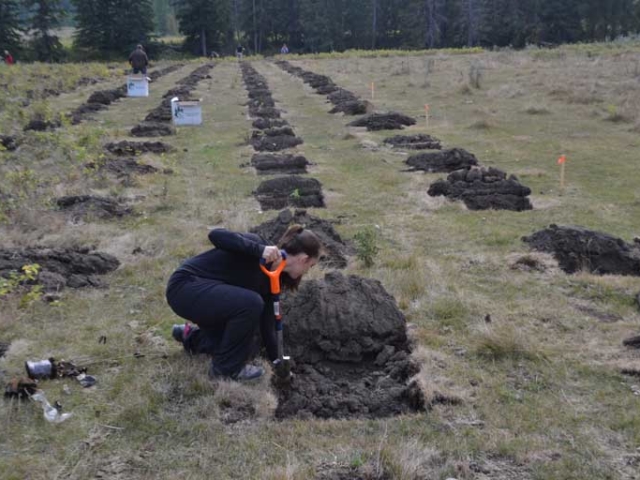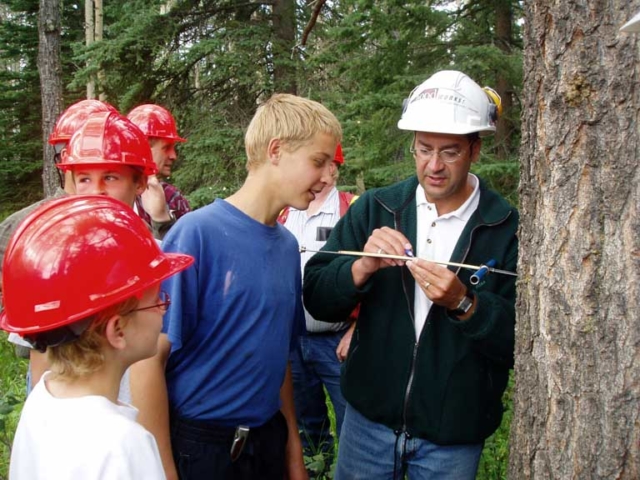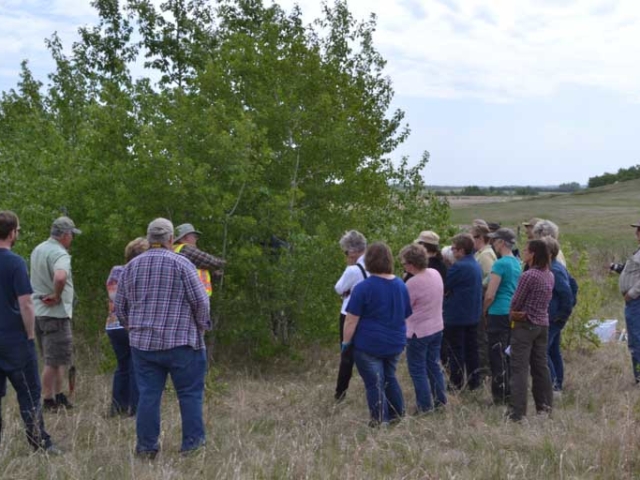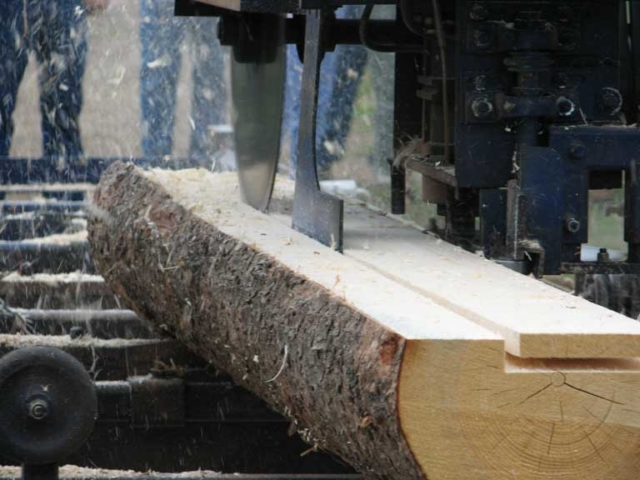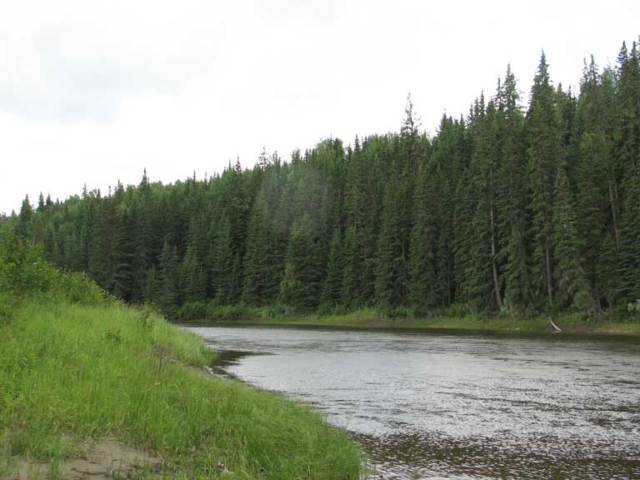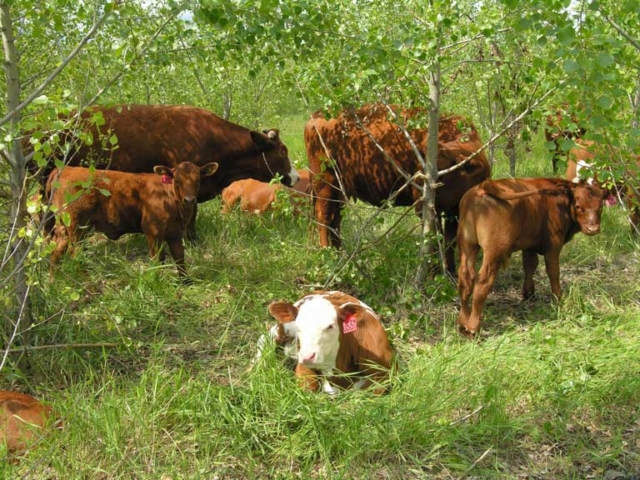Ecobuffers and Pollinators: Make the Most of your Marginal Land
Author: Brieanna Wallace
By incorporating diverse, native flowering species onto your property you will provide food and habitat capable of supporting a healthy pollinator population. Despite many people being aware of this relationship, the potential of ecobuffers to act as a pollinator strip is often overlooked…
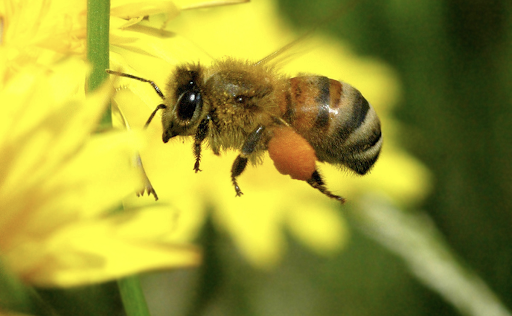
Although they aren’t native, the European Honeybee (Apis Mellifera) is very common across the Canadian landscape.
A pollinator strip in an area purposely designed and seeded with flowering species instead of agricultural crops to increase the network of pollinator habitat. When creating habitat for pollinators similar to a pollinator strip, ecobuffers can act as the perfect base. The already established shrub and tree structure can provide the ideal mix of shelter, sunshine, and structural diversity to help beneficial species thrive.
Alberta heavily relies on pollinators for production of crops such as canola and alfalfa. Incorporating native wildflowers into ecobuffers to create pollinator strips encourages as much interaction between insects and pollinator dependent crops as possible. It is ideal to utilize native flowering species when enhancing your ecobuffer. Native flora has evolved with native pollinators over time and they are best suited to each other. This is because it reduces and/or eliminates the strain on pollinators of having to recognize different species and therefore leads to increased pollination.
Tips for enhancing your ecobuffer:
- Plant native flowering species with high pollen/nectar resources and diverse shapes, sizes, colors, and bloom periods (ideally 3+ species blooming per month over the course of the growing season);
- Plant flowering species clumped together in small groups (3-8 individuals per clump) to maximize pollination;
- Hollow-stemmed plants, decadent trees and shrubs, and bunch grasses for nesting and overwintering sites; and
- Try to ensure the area is connected to other habitats (some pollinators like to nest close to where they were born, so developing these connections between habitats can be extra effective).
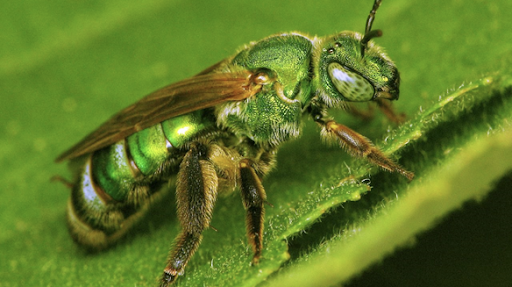
Like their name would suggest, the sweat bee (Agapostemon) is attracted to human perspiration.
When setting up your pollinator strip remember to “bee” patient – sometimes it can take a while for healthy habitats to establish. However, once they are established, nature will do the work when it comes to attracting beneficial insects if they are in the area.
Need help selecting species for your pollinator strip? AWES has native pollinator friendly plant lists for the aspen parkland and boreal forest, as well as a native species database!
- Recommended Native Pollinator Friendly Plants For The Aspen Parkland Region Of Alberta: https://www.awes-ab.ca/wp-content/uploads/2019/05/Recommended-Native-Pollinator-Friendly-Plants.pdf
- Recommended Native Pollinator Friendly Plants For The Boreal Forest Region Of Alberta: https://www.awes-ab.ca/wp-content/uploads/2019/05/Boreal-Forest-Pollinator-Friendly-Species.pdf
- AWES Native Agroforestry Species Database: https://www.awes-ab.ca/species/
References
https://www.fs.fed.us/wildflowers/pollinators/documents/AgCanadaNativePollinators.pdf
https://www.awes-ab.ca/wp-content/uploads/2018/11/Riparian-Manual.pdf
https://www.awes-ab.ca/wp-content/uploads/2018/05/Eco-Buffer-Factsheet-Complete.pdf
https://www.kelloggs.com/en_US/sustainability/pollinator-strips.html


